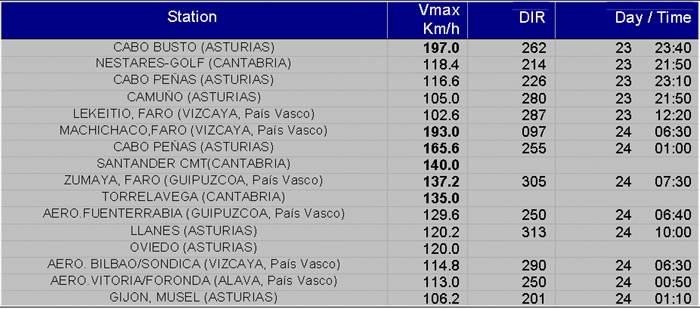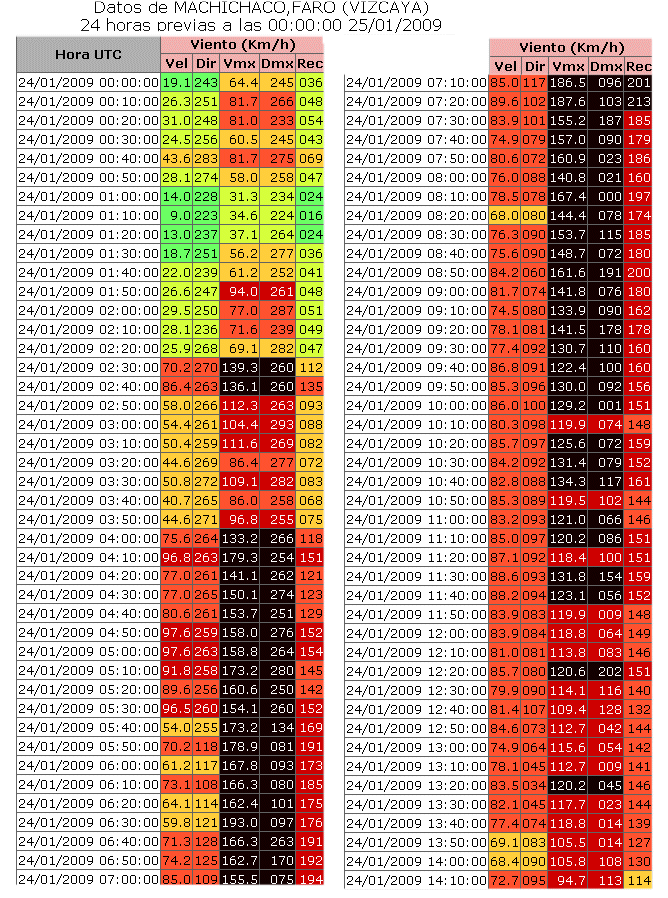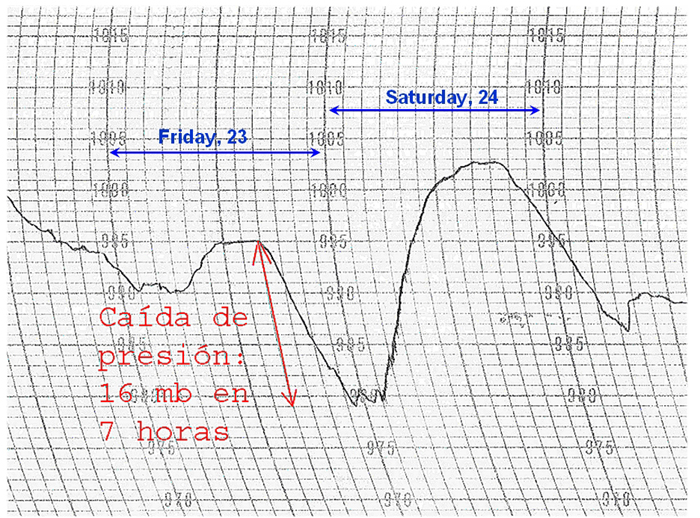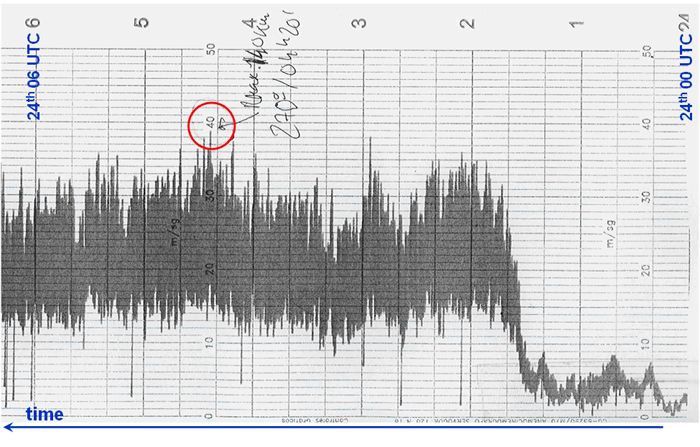Surface Observations
For a quick view of the surface wind field registered by different weather stations along the path of the pressure system, a chronogram with maximum wind gusts time and values has been prepared:
Below, two tables with surface weather observations of maximum wind gusts for days 23 and 24, registered by AEMET weather stations, are presented. The first one corresponds to stations located at Asturias, Cantabria and Pais Vasco regions, near Spanish northern coast (see graph with the wind plots above to locate the area). The second table is for stations located in other regions like Galicia, Castilla y León, Cataluña, Valencia, and the Balearic Islands. Many other wind gusts records well above 100 km/h are available that were registered by stations from regional government networks, but not shown here.
Also, the sequence of wind observations at Machichaco automatic weather station (Vizcaya, País Vasco) , for day 24 from 00 UTC to 14:00 UTC is presented, to emphasize the large persistence of the hurricane force wind gusts during the event.
Surface pressure and wind observations at Santander Meteorological Observatory show clear signals of a very rapidly developing system. Check the 16 mb pressure fall in just 7 hours, which represents more than twice the deepening rate required for a cyclogenesis process to be classified as explosive.
As forecasted by ECMWF model, hurricane force surface wind gusts were registered, reaching the value of 140 km/h (39 m/s) at Santander Observatory. The direction of these wind gusts was 270º.
An unprecedented record in sea wave height in Spanish sea waters was registered on day 24, according to the data available from a buoy located 22 miles north of Santander coast, belonging to the Instituto Español de Oceanografía. A peak wave height of 26.13 meters (height of a 7 floors building) was registered by the mentioned buoy, but is not appearing in the graphic shown below, because the buoy got its anchor broken as a result of the very intense swell and drifted away, although it continued transmitting data. The name of this buoy is Augusto González Linares (buoy AGL). The buoy was recovered afterwards, on Wednesday 28 at 11 UTC, 10 miles off San Sebastian coast, and was taken back to Pasajes harbour.






